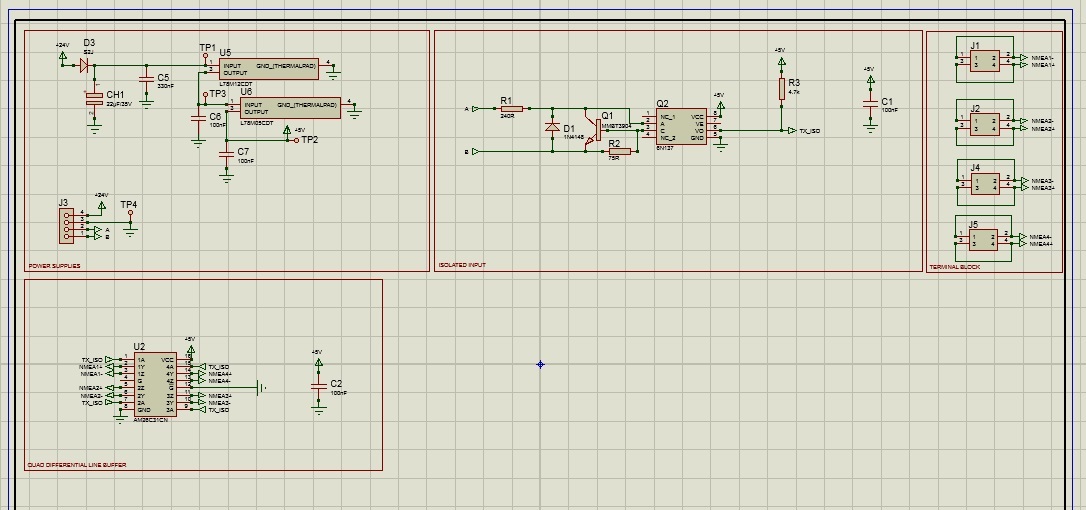Other Parts Discussed in Thread: THVD2450, SN65HVD1785, ISO7721
Hi everybody,
I'm working on an NMEA buffer. I'd like to use my nmea0183 signal from my GPS (RS485) to other equipments (AIS, VHF...).
I've found this component AM26C31 which seems to be the right one.
So what I do :
- Receive my NMEA signal from my GPS, isolated it through an optocoupler (6N137) and then the signal goes to AM26C31.
So my question is, can I connect one output from my optocoupler to the 4 inputs of AM26C31 without any problems ? Is there no problems with impedance or capacitance ?
Moreover, I think my +/- from my input will be inverted on my output ? I need to re-inverted them.
Thank you in advance for your answer,
Fabrice



